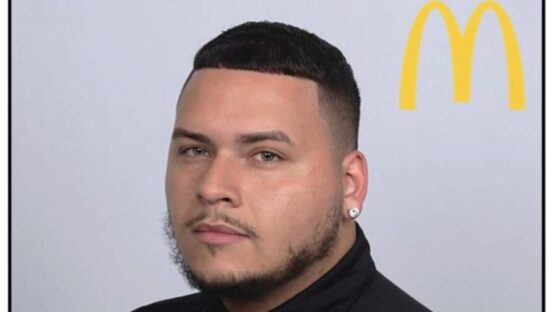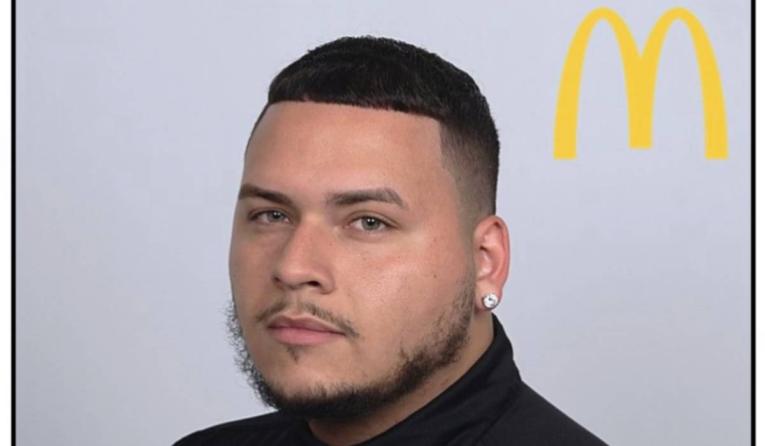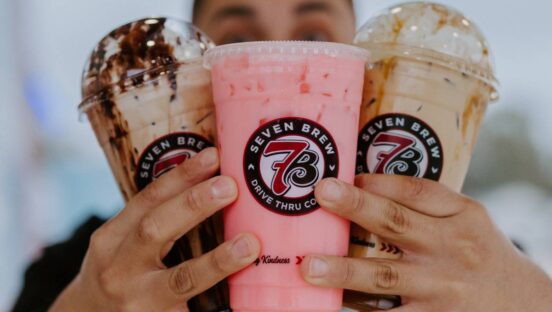At 24 years old, Luis Rosa Jr. recognizes his rare position. The young leader serves as a deployment manager for McDonald’s, recently being promoted from operations consultant.
He grew up in the McDonald’s system, starting as a crew-level employee. He didn’t know what he wanted to do for a living at the time. Rosa was in high school and he felt like the job was a placeholder until he finished college. But he learned from mentors that inspired him. He was taught that food service has a career path that doesn’t stop at general manager. Rosa could be a supervisor, go into corporate, marketing, operations, real estate, or digital.
That’s what put Rosa in the position he is today—working with a North Carolina-based franchisee to create individual development plans, oversee P&L responsibilities in terms of food costs, labor, and planned maintenance, and collaborate with directors of operations to ensure the company is aligned with McDonald’s corporate standards.
“McDonald’s is going through a big phase where there’s a lot more visits than typically we’re used to,” Rosa says. “So we’re gearing up for that as far as making sure we’re aligned with that. A lot more compliance visits and unannounced visits. Our job is just to make sure that we’re coaching the GMs and making sure that we execute so that we can continue to grow and stay compliant with the franchise.”
QSR recently spoke with Rosa to learn more about his role and how he implements high-quality training practices at McDonald’s.
You’ve created some training systems that have become standardized across the organization. I was hoping you could give me some examples of what you’ve done so far in your career.
When I was brought on board, my particular role was to create a training program for new crew members coming in. One of the things I’ve noticed in operations and me being a GM and district manager, a lot of people put training to the backboard. Because with staffing nowadays, it’s hard to really give someone that good training. And the goal was how can we implement training and make training important while also not being a hindrance to operations. What I created was a four-day process. McDonald’s has something called FRED, an online training platform, and I incorporated that in an onboarding session. You implement the training—here’s what your first week looks like. I think for the first two days, it’s four hours a day. You do a combination of touring a store, watching your videos on each station, and what station you start off with. Every person for the first two days goes through the same exact training, they go through the orientation. Whoever the manager is in the store, something McDonald’s does, and they’re very big on, is something called an “I story.” You pretty much tell them about your journey throughout McDonald’s. And they learn the videos, then you put them on the station with someone that the general manager and the people manager feel is qualified to train them.
What in your mind makes a successful training program and then go into where others may go wrong when trying to create these training programs?
First, you start with the foundations. For example, at McDonald’s, we have Fred. Starting last year, they did something called People BSBs. And pretty much it’s compliance to make sure that we’re doing our due diligence to train our employees on certain things that McDonald’s corporate wants franchisees to adhere to. I think it starts with that. A lot of these videos that McDonald’s put in place—safe and respectful workplace, harassment, all these different workplace training—can really affect the employee’s experience. I think it’s just starting with the foundations and the basics, making sure that we do a great job at elaborating and really giving the employee clarity of what the role is. Something for other operators to really learn from as far as affecting turnover is follow-up. I think that’s the most missing step in training that I’ve noticed in my experience is that follow-up. We’re so quick to show someone something and we just expect them to get it right away. We have to follow up and sometimes, if it’s not working, you don’t give up on that employee. How else can they learn? What else can we do to let that employee understand? When we go to these McDonald’s corporate classes, when I went to Hamburger University, everyone learns in a different way. In college, they teach you auditory learning, visual learner, and hands-on learning. How can you cater to each person’s learning style? And that’s where communication goes into place. You have to communicate with your employees and you have to build those relationships. I think relationships are the key. Professional, mutual, beneficial relationships are always what’s going to make you successful.
I imagine you’re responsible for training leadership roles all the way down to crew members. When it comes to training and development, do you take a different perspective when you’re training a manager or a general manager compared to a crew-level member?
It’s pretty much the same on the skill level. We have a manager MIT (manager in training) program as well. That’s a little bit more advanced and accelerated. It just depends on the person and what their experience is. But let’s say, I hired someone that was a general manager at Wendy’s to be a general manager at McDonald’s. My expectation is they’re going to be able to complete the training program at a little bit more accelerated pace than a crew member off the street or a 16-year-old with their first job. Our crew members that come in, we’re pairing them up with a crew trainer. Someone that’s knowledgeable at the station. All of our crew trainers—before we allow to train any crew—we make sure that they’re verified. As for a manager, I wouldn’t necessarily do that. I would have a new manager within the first two to four weeks when they’re learning the basic stations, we verify them on those stations and they move into shift management and more advanced functions. That’s when we pair them up with a senior shift manager. Someone that’s certified—a department manager or the GM in that case. If I have a general manager that I’m hiring externally, nine times out of 10 they’re either going to be with a salary department manager or they’re going to be working the same exact schedule as the current GM that’s in place. That’s where the disconnect comes as far as turnover when you hire management externally and they get thrown out there once they feel like they know the basics. It’s very important to have some type of senior management following up.
What are some of the keys to getting the best out of people and getting their best efforts?
I think servant leadership is definitely the number one answer for that. You got to show them that you’re not scared to do what they’re doing, you’re not scared to get hands-on and do what they’re doing on a day-to-day basis. We’re in this together. That’s the difference. McDonald’s shifted. It used to be all about management, but now it’s shifted to leadership. Leadership is being a role model, so let me show them how to perform at a high level on the table. Let me show them how to perform to a high level in the drive-thru. I’m not scared to go clean the bathroom. I think servant leadership is definitely how you get the best work out of your employees. On top of that, like I said, communication, building those relationships, and getting to know your people is definitely important because when you build those relationships, you connect with that person a little bit more to gain a little bit more respect for you. You may be able to leverage some of the stuff that you’re teaching or some of the things that you’re coaching based on their personality or something they relate to. I use video games as an example. I can maybe leverage a conversation about video games for something on the table. Just giving it a reference to where they get can relate to it a little bit more.
Give us a bigger perspective of how things have maybe changed from pre-COVID to now in terms of what you have to do with training and how you have to talk to employees.
It taught us all that people work for people. I think the employees definitely—I don’t want to say have the upper hand—but they have more leverage now as far as they want to be treated right. During COVID that really taught us a lesson—you can’t just bark orders around and expect it to be done. You have to be understanding. You definitely have to be a little bit more lenient. You have to be an employer of choice. With all of these payouts and different companies struggling, the competition got way harder. People are paying $2 or $3 more to retain people. And it’s like, why would I stay here if I could go make $4, $2, or $3 more across the street? But what I’ve learned is that you treat your people well, treat them with respect, show them that there’s room to grow, show them that we’re in this together, they’re more willing to stay. For some people, it’s not about the money. It’s about how they’re being treated. I think that’s really the biggest thing is just treating our employees better during COVID as far as a training standpoint.









